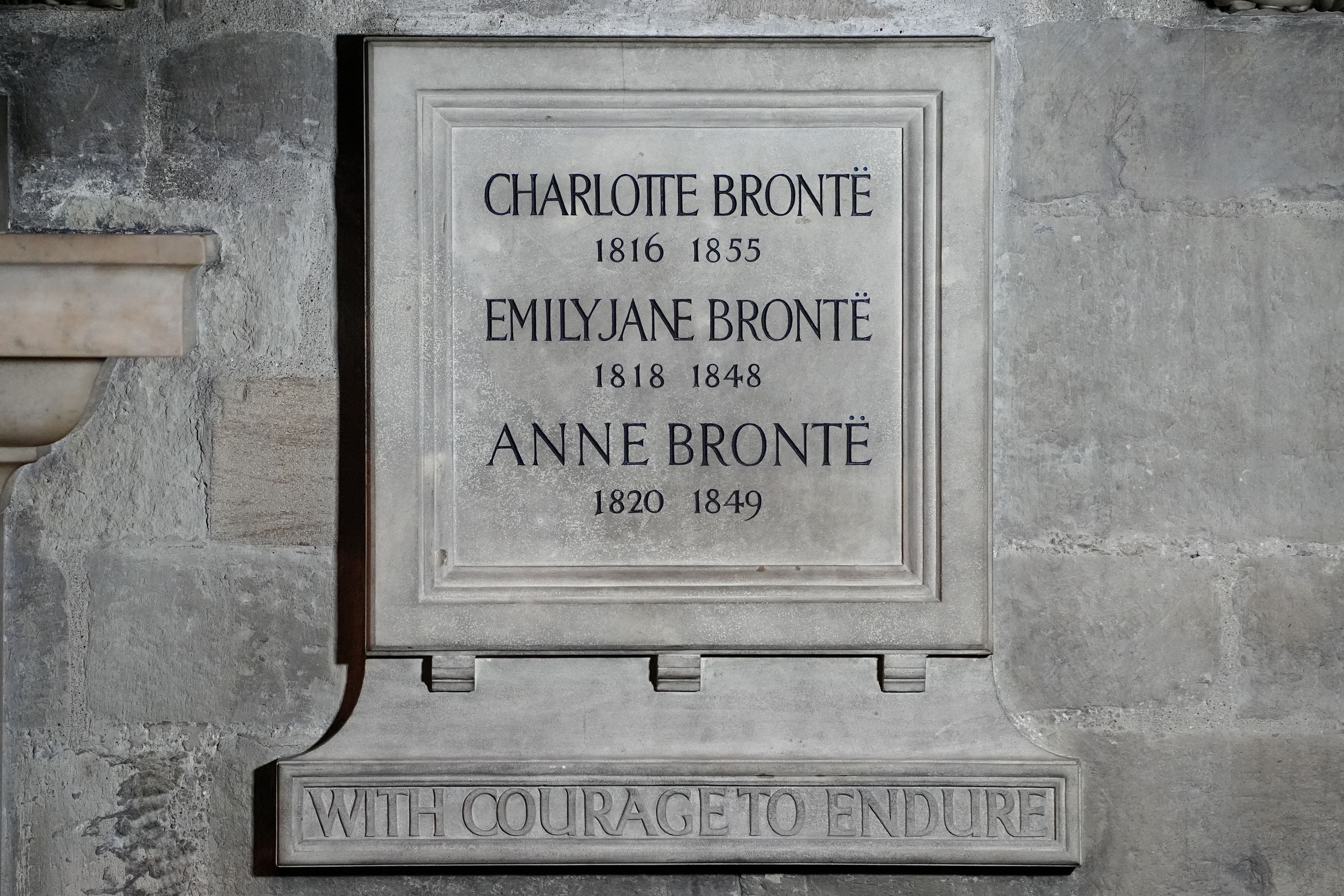Dots above Bronte surname added to memorial nearly 85 years on from installation
It is not known why the two dots above the ‘e’ at the end of the Bronte name were left off when it was originally installed in 1939.

Your support helps us to tell the story
From reproductive rights to climate change to Big Tech, The Independent is on the ground when the story is developing. Whether it's investigating the financials of Elon Musk's pro-Trump PAC or producing our latest documentary, 'The A Word', which shines a light on the American women fighting for reproductive rights, we know how important it is to parse out the facts from the messaging.
At such a critical moment in US history, we need reporters on the ground. Your donation allows us to keep sending journalists to speak to both sides of the story.
The Independent is trusted by Americans across the entire political spectrum. And unlike many other quality news outlets, we choose not to lock Americans out of our reporting and analysis with paywalls. We believe quality journalism should be available to everyone, paid for by those who can afford it.
Your support makes all the difference.A memorial to Charlotte, Emily and Anne Bronte has had the dots above their surname added nearly 85 years after it was first installed at Westminster Abbey.
The diaereses, the name for the two dots above the “e” at the end of the Bronte name, were omitted when it originally commemorated the novelists on October 8 1939 amid the outbreak of the Second World War.
Journalist and Bronte historian Sharon Wright, editor of the Bronte Society Gazette, raised the issue with the Dean of Westminster, The Very Reverend Dr David Hoyle and the Abbey asked its stonemason to tap the dots in and its conservator to paint them.
Ms Wright, who went to Poets’ Corner for a research trip, told the PA news agency that the dots being left off the sisters’ names “really troubled” her as “the names of the Bronte sisters were spelled incorrectly, they didn’t have the correct punctuation on the e” so it sounded more like “Bront” not “Bronte”.
She said she was “really puzzled” that in 85 years she seemed to be “the first person on record” to complain about the fact the dots had been omitted.
She added: “There’s no paper record for anyone complaining about this or mentioning this, so I just wanted to put it right, really.
“And it’s lovely because it’s 85 years since it went in, in October. So it’s a sort of timely happy ending, isn’t it nice?”
Ms Wright, who is from Bradford, not far from where the sisters lived in Haworth, says: “These three Yorkshire women, deserve their place here, but they also deserve to have their name spelled correctly.”
She added that the Bronte Society, which sponsored the memorial, were “really happy” with the change.
In a statement, Rebecca Yorke, director of the Bronte Society, said the group was “very grateful to the Dean of Westminster and his colleagues at the Abbey for their positive response to Sharon’s inquiries”.
She added: “As the Brontes and their work are loved and respected all over the world, it’s entirely appropriate that their name is spelled correctly on their memorial.”
The Dean of Westminster said: “I am grateful to have this omission pointed out and now put right.
“Memory is not a locked cupboard, but an active thing and the Bronte Society have given us a glimpse of their commitment to a lively remembering.”
Records indicate that the rectangular tablet of Huddlestone stone, measuring 600mm x 600mm and located near fellow novelists Jane Austen and Charles Dickens, did not have a formal ceremony of unveiling until July 19 1947, and the missing dots appear to have been missed.
It has long been thought that Charlotte, Emily and Anne’s father, Patrick, change his Irish surname of Prunty or Brunty as he entered St John’s College, Cambridge.
During their shorts lives, Charlotte wrote the works Jane Eyre, Shirley, and Villette, Emily put out Wuthering Heights, and Anne published The Tenant Of Wildfell Hall and Agnes Grey.
Charlotte, who married Arthur Bell Nicholls, was the last of her siblings to die, and passed away at the age of 38 in 1855.